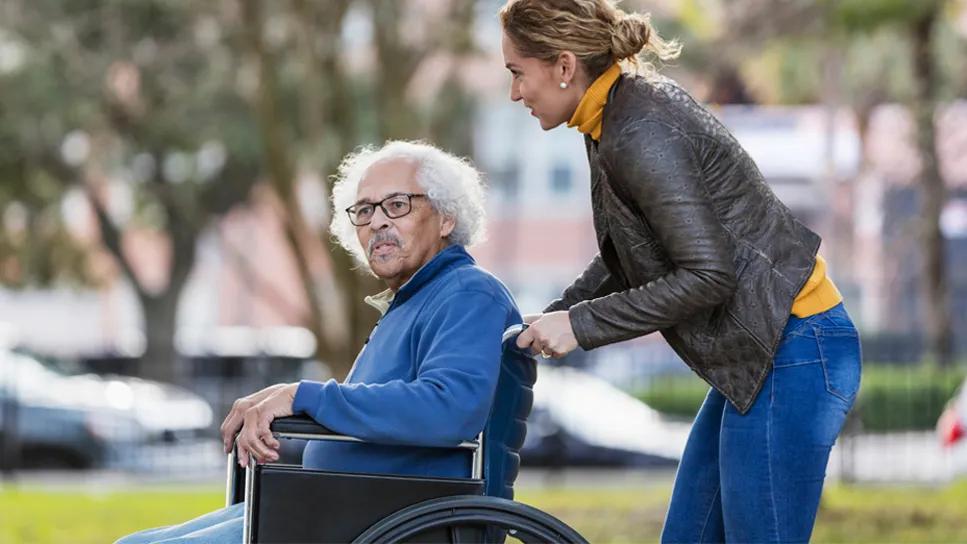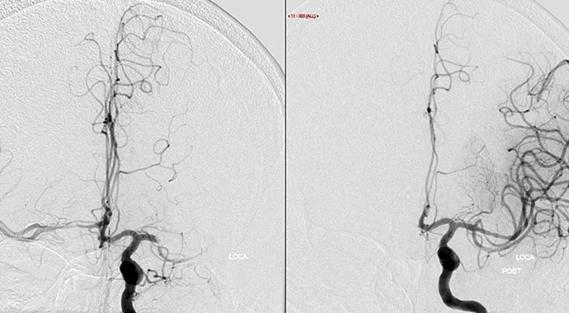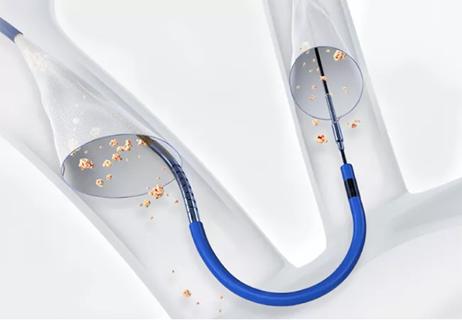Uninsured Hispanics least likely to be discharged to facility-based rehab or home healthcare

Access to post-acute services for stroke in the United States is race-, ethnicity- and geography-dependent and highly reliant on insurance, leading to significant disparities in care, particularly among Hispanic patients. So finds a retrospective database study published by a multicenter research team in Neurology Clinical Practice.
Advertisement
Cleveland Clinic is a non-profit academic medical center. Advertising on our site helps support our mission. We do not endorse non-Cleveland Clinic products or services. Policy
“Our results indicate that stroke patients with the same clinical characteristics are being discharged to very different settings based on nonclinical factors,” says corresponding author Shumei Man, MD, PhD, Director of the Thrombectomy-Capable Stroke Center at Cleveland Clinic Fairview Hospital. “Access to inpatient rehabilitation and home health care needs to be improved, especially for Hispanic individuals who are uninsured and patients who live in the West North Central census division of the country.”
Appropriate rehabilitation following hospital discharge is known to enhance recovery from stroke — a major cause of long-term disability. Inpatient rehabilitation facilities, skilled nursing facilities, hospice facilities, psychiatric hospitals, home healthcare (HHC) or recovery at home may be considered. The care a patient receives is determined by their clinical condition, but the accessibility of services may be limited by race, ethnicity, insurance and geographic location, as well as by health policies and regulations.
The new study is the first to explore the interaction of insurance status with race and ethnicity in terms of impact on post-stroke discharge disposition in the current era. It also includes a novel analysis of stroke-specific regional disparities in post-acute care availability and utilization.
Data for the cross-sectional analysis came from more than 1 million hospital admissions for ischemic stroke and intracerebral hemorrhage reported in 2017-2018 as part of the National Inpatient Sample. Discharge to one of the three main discharge destinations — a facility, HHC or recovery at home without HHC — was the outcome of interest, with odds reported as adjusted odds ratios.
Advertisement
Using multinomial logistic regression, the researchers calculated the odds of discharge to a facility over home, and to HHC over home without HHC, according to patients’ race, ethnicity, insurance status and U.S. census region. Adjustments were made for patient and hospital factors including disease severity, confounders and survey design.
Compared with stroke patients with private insurance, those who were uninsured had the lowest adjusted odds of discharge to a facility over home (0.44; 95% CI, 0.40-0.48) and of discharge to HHC over home without HHC (0.79; 95% CI, 0.71-0.88).
Compared with white patients, Hispanic patients who were uninsured or on Medicare/Medicaid were 25% and 20% less likely, respectively, to be discharged to a facility over home. Odds of discharge to HHC rather than to home with no HHC also were lower for uninsured Hispanic patients than for white patients (0.74; 95% CI, 0.57-0.97).
While odds of discharge to a facility over home were lowest among Hispanics on Medicare or Medicaid, patients with either of those insurance types had the highest utilization of post-acute services. The group least likely to be discharged to a facility over home was Hispanic women.
Findings for Black patients were consistent with those of some prior studies but different from others. No overall racial disparities in post-acute service utilization were found among Medicare/Medicaid beneficiaries and those with private insurance. Instead, Black patients had more post-acute care utilization than white patients.
Advertisement
Examining regional variations, the authors found that patients in the East North Central census region had the highest rate of discharge to a facility (39.2%), whereas those in the Pacific region had the lowest rate (31.2%). Patients in New England had the highest rate of discharge to HHC (20.2%), whereas those in the West North Central region had the lowest rate (10.3%).
“We found significant regional disparities in each discharge destination as well as in discharge to one pathway over others,” Dr. Man observes. “Hospitals in Maine, Vermont, Massachusetts, Rhode Island and Connecticut had the highest odds of facility over home discharge, as well as discharge to HHC over home without HHC.”
According to the authors, their overall findings point to a need for targeted efforts to improve access to post-acute stroke care services for uninsured patients, particularly those who are Hispanic and who live in certain regions of the country.
“Lack of formal post-acute care may be a major contributor to the worse functional outcomes seen among Hispanic stroke survivors,” Dr. Man says. “Further health equity intervention should consider providing health insurance and culturally tailored post-acute care to all Americans, with a focus on not missing the uninsured Hispanic population.”
Advertisement
Advertisement

Study links large artery atherosclerosis and delayed presentation to poorer treatment results

$3.2 million grant will fund use of calcium-based imaging to record neuronal activity in ischemia model

Findings from large cohort analysis can guide ongoing quality improvement initiatives

Analysis of STS/ACC TVT Registry finds greatest benefit in patients with prior stroke

Insights and what’s next for the first U.S. mobile stroke unit to treat patients

Combining quantitative vessel wall MRI metrics, CSF abnormalities and neurologic symptoms can be highly predictive

Research to test clinical efficacy and cost-effectiveness versus standard-of-care rehab

EDEN analysis investigates electrophysiological changes after continuous dentate nucleus stimulation